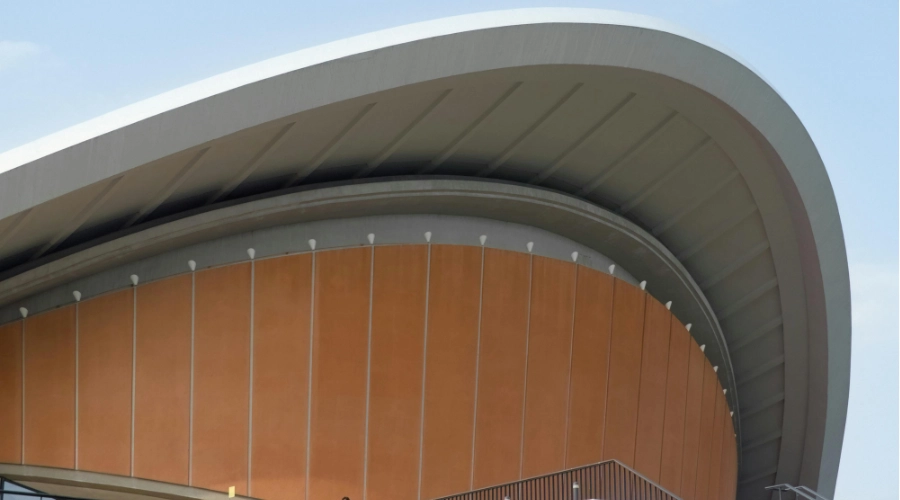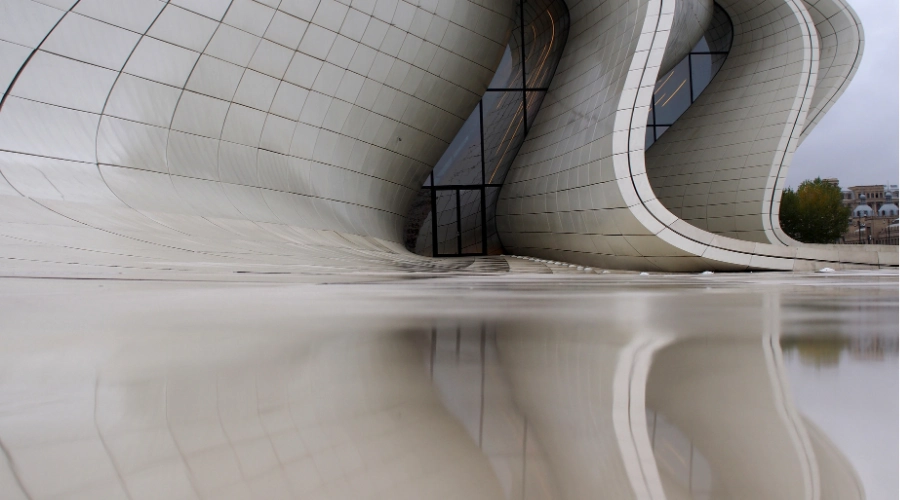Imagine entering a space where the ceiling appears to float above you, sleekly delineated and curved, effortlessly beautiful. That is indeed shell roof construction. The unique shapes are used to distribute loads so efficiently that colossal open spaces can be created with very little support. Whether it’s a dome, a hyperbolic paraboloid, or a grid shell, shell roofs give shape to fabulous engineering and design so that they stretch the limits of architecture. In this session, we will look at the materials, methods, and innovative designs used behind these marvellous roofs.
What is a Shell Roof?
A shell roof is a thin, curved roof structure in the form of an arch or dome. It often mimics the shapes of natural forms such as domes, vaults, and shells. It is known for its minimal amount of material, yet provides enhanced support and effectively distributes loads. The geometric form allows both aesthetic and functional values to the structure making it an ideal element for all constructions.
Types of Shell Roofs
Single Curved Shell Roofs

A single curved shell roof has single curvature along its surface offering a simple, smooth curve in one direction, covering smaller spaces. It helps in effectively distributing loads along the curve into the supports at the edges. These shell roofs are made from concrete, steel, or timber and can be ideal for small to medium-sized buildings, industrial buildings and temporary structures. The Basilica of Saint-Sernin in France and The Lincoln Cathedral in England are two iconic examples where single-curved shell roofs are used.
Double Curved Shell Roofs

Double Curved Shell Roofs are more complex and feature two curves perpendicular to each other. These roofs are also referred to as hyperbolic paraboloid or dome shells. The two curves intersect at an angle to create a saddle-like shape. They help in managing complex loads more efficiently, making them ideal for larger buildings such as airports, sports stadiums, and industrial buildings. Sydney Opera House in Australia, the TWA Flight Center at Kennedy International Airport in New York, and the University of Munich’s Hall of Architecture are some iconic buildings where double curved shell roofs are used.
Materials Used for Shell Roof Construction
- The shell roofs are built in situ with reinforced concrete as it has the strength, and durability that is essential for constructing large, permanent structures such as domes and vaults.
- Steel is a strong and flexible material for grid shells, complex shell designs, and where load carrying becomes very critical.
- Timber is a sustainable, lightweight material for small to modular shell roofs, creating aesthetics and a kind of natural look. They are very useful in developing green and temporary constructions.
- Composite materials like Fibre reinforced polymers are used for shell roofs to provide high-strength, low-weight flexibility and can be used for permanent or temporary constructions.
Design Considerations for Shell Roof
- The curvature of the shell should effectively withstand and distribute both dead loads and live loads without causing cracks or failure.
- The choice of materials should be based on the strength, span, durability, and environmental conditions. For larger spans, reinforced concrete or steel can be used, while timber and composites can be used for small and lightweight structures.
- The shape of the shells is crucial to fulfil both structural efficiency and aesthetics to endure structural stability. Double-curved shells can be used for larger spans, while single-curved shells are ideal for smaller and simpler structures.
- The roof should provide proper thermal insulation and ventilation to avoid heat in the building, particularly in public spaces.
- The shell roof should be easy to construct and should be flexible enough yet offer enhanced strength at an affordable cost.
Advantages of Shell Roofs
- Lightweight, structurally effective, and, thus, less expensive than independent flat roofs, shell roofs require less material. Therefore, they greatly reduce the total weight of the building, as well as its dead load on the supporting structures.
- Shell roof forms enable efficient load transfer and containment to gravity, wind, etc.
- Larger interior areas can be covered by shell roofs without the need for internal supporting columns, making them great for open spaces.
- The sleek and curved form of shell roofs adds to its aesthetic effect, thus making it a popular choice in buildings concentrated on architectural design.
- They possess high strength, stability, and wear very reliably; hence, they become durable and also elongate their lifespan.
- They offer thermal and sound insulation, keeping the structure unaffected by external conditions.
- These could adapt to many architectural styles depending on the purpose of the building.
Disadvantages of Shell Roofs
- Shell roof design and construction are very much more complicated than traditional methods of roofing.
- Initial costs are much higher than other roofing solutions, due to its greater use of labour, skills, and other processes in installation.
- If shell materials like concrete are not reinforced, they tend to crack due to their thickness.
- The complex shape, height and complex installation, make the inspection and repair difficult.
- Shell roofs of concrete or metal are subject to contraction and expansion due to thermal stress.
Applications of Shell Roofs
- It is used as a roofing material in stadiums and sports arenas, where the roof should cover an extended area with minimal internal supports.
- Ideal for creating vast spaces in industrial applications without hindering movement in the internal floor areas.
- Shell roofs serve as a durable, economical building solution for warehouses, factories, and hangars.
- Domes and arched shells can be used as roofing materials for religious structures such as mosques, churches and cultural centres.
- It is best suitable for spaces such as museums, libraries, and exhibition halls, where open, lively space, and accommodating a large traffic are crucial.
- Ideal for construction of transportation terminals like airports, bus stations, and railway terminals, due to smooth flow of traffic, without interruption.
Conclusion
In summary, shell roof construction combines architecture with engineering, giving a dramatic art for large spaces with significant support. Such shapes and materials provide the innovative roof for redefined architecture, something of aesthetics and strength. Whether it is the monument or contemporary structure, shell roofs offer design excellence and mark the future of architecture with elegance and efficiency.

